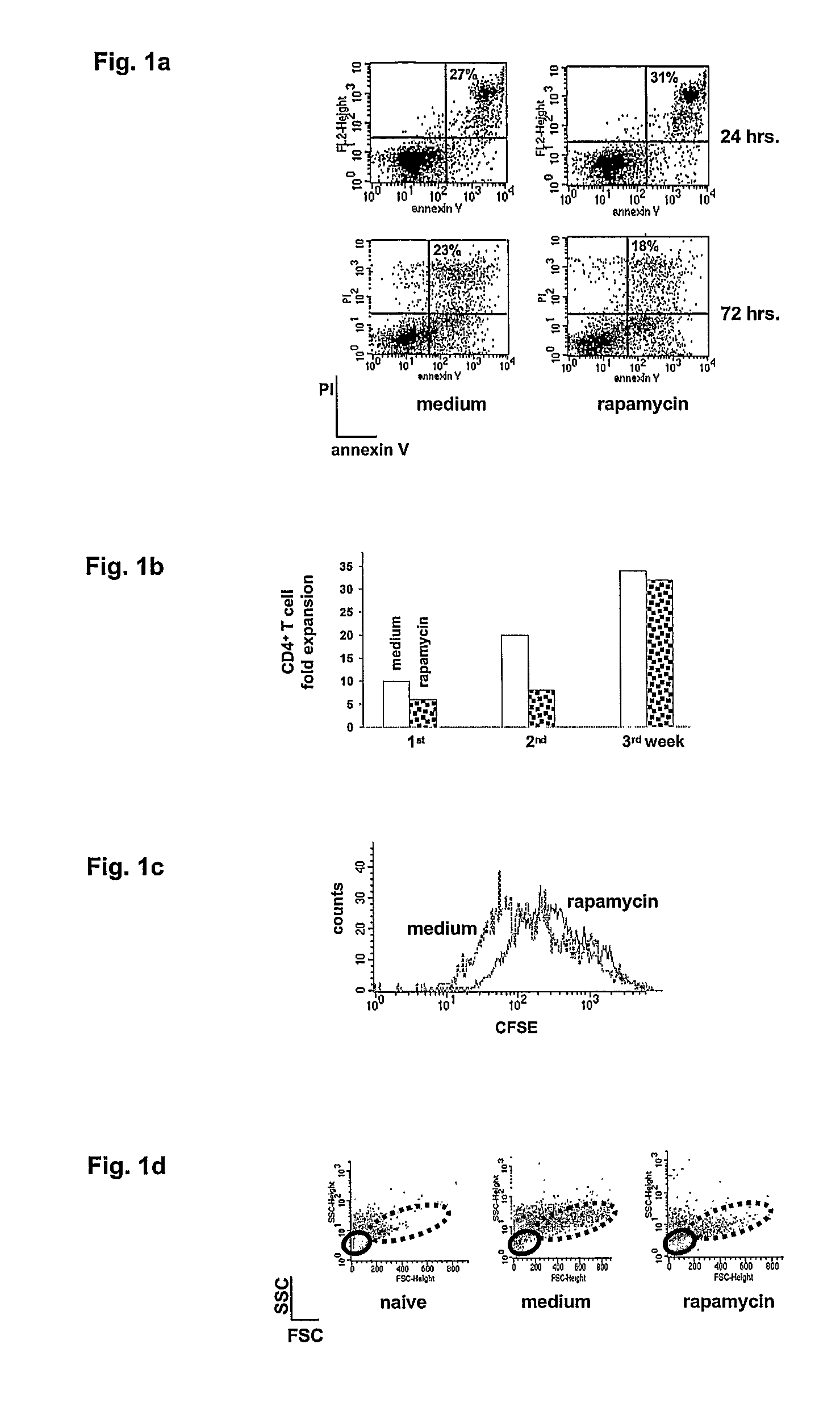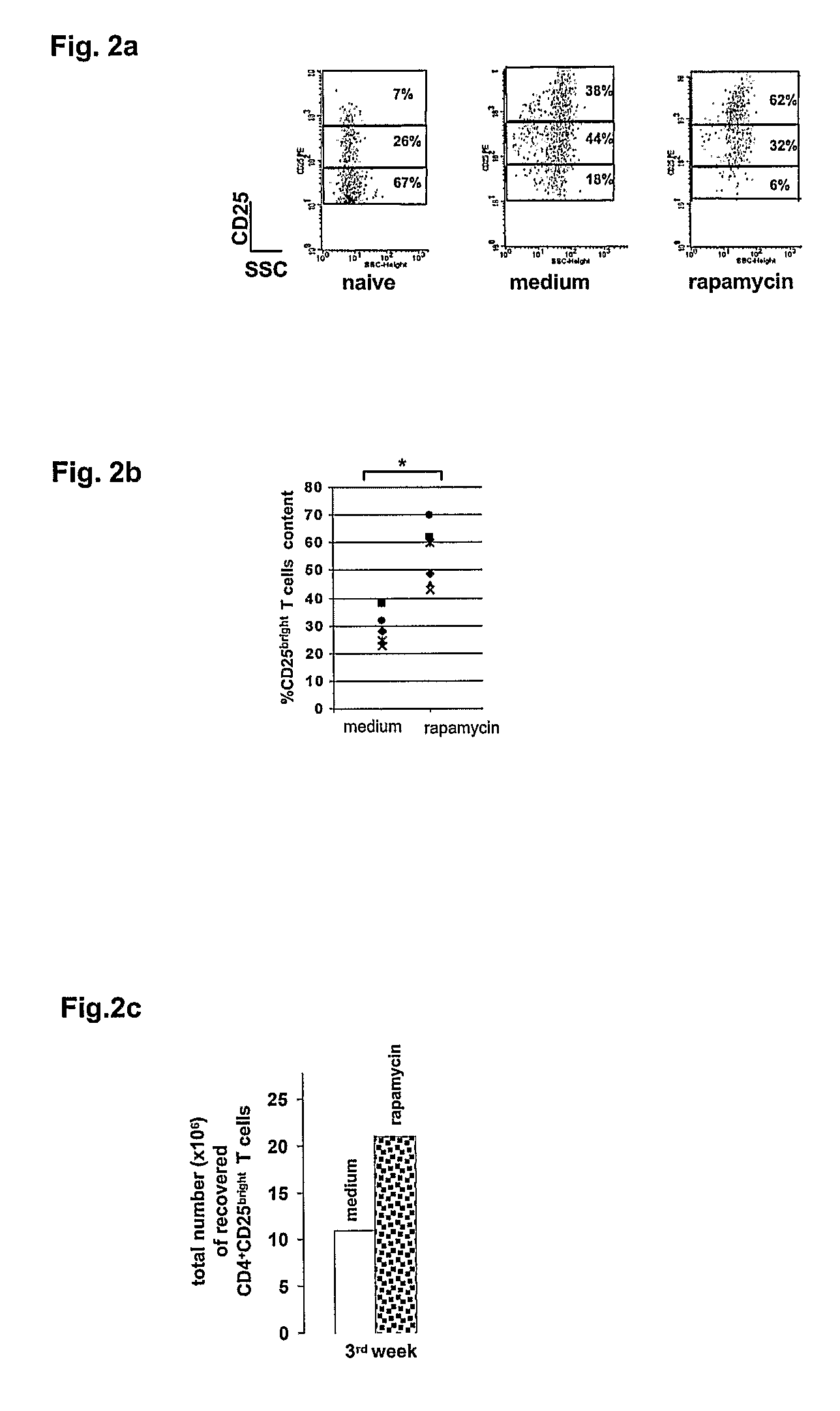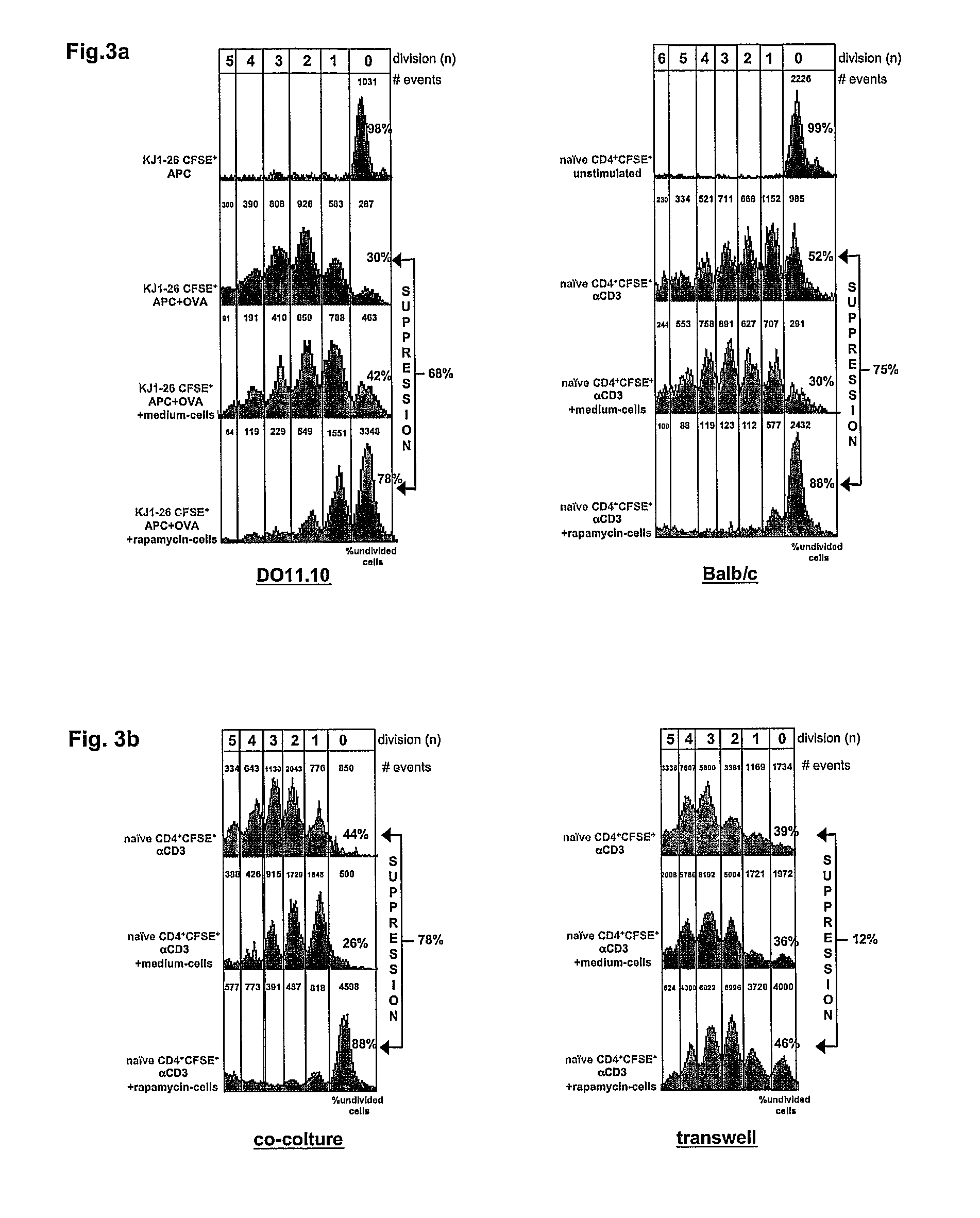Method for expanding Cd4+ Cd25+ T regulator cells
a t-cell and cd4 technology, applied in the field of cd4 + cd25 + t-cell expansion, can solve the problems of destroying the graft, destroying the graft, and destroying the beneficial immune response against infectious pathogens, so as to prevent acute graft rejection and inhibit the proliferation of cytokines-induced t-cells
- Summary
- Abstract
- Description
- Claims
- Application Information
AI Technical Summary
Benefits of technology
Problems solved by technology
Method used
Image
Examples
example 1
Rapamycin does not Block Activation Induced Cell Death and Proliferation of Murine CD4+ T Cells
[0078]To define the effect of rapamycin on T cells, naïve CD4+ T cells from spleens of DO11.10 TCR tg mice were activated with APC+OVA in the presence or absence of rapamycin and activation induced cell death (AICD) was monitored by binding of annexin V. In cells exposed to rapamycin, neither increase nor reduction of apoptosis was observed upon in vitro activation, compared to control cells (FIG. 1A). In more detail, DO11.10 tg CD4+ T cells were cultured with APC+OVA (medium) or APC+OVA+rapamycin (rapamycin) and AICD was monitored by FACs after 24 and 72 hours of culture. Percentage of PI+-annexinV+ cells is indicated in each dot plot. These results confirm that rapamycin does not prevent AICD in CD4+ T cells as already demonstrated in murine splenic mononuclear leukocytes activated with αCD3 mAb (Wells 1999), and in human peripheral blood mononuclear cells activated in primary mixed lymp...
example 2
Rapamycin Expands CD4+CD25+FOXP3+ Tr Cells with Suppressive Ability In Vitro
[0084]After 3 rounds of stimulation with APC+OVA (medium) or APC+OVA+rapamycin (rapamycin), DO11.10 tg CD4+ T cells were left resting for one week with no further stimulation in the presence of IL-2 (50 U / ml). After seven days cells were analyzed by FACS. Cells were gated on CD4+CD25+ cells and numbers represent percentages of the three different CD25+ subset (i.e. bright, dim, and low). Naïve CD4+ T cells from a DO11.10 tg mouse were used as control.
[0085]Content of CD25bright T cells in medium- and rapamycin-cultures in each of the 6 experiments is presented. Star indicates statistical significance (*0.001<p≦0.05).
[0086]T cells activated in the presence of rapamycin were highly enriched in CD4+CD25bright T cells, which represent the Tr subset among the CD4+CD25+ T cell population (FIGS. 2A and B) (Levings 2002, Belghith 2003).
[0087]1×106 DO11.10 tg CD4+ T cells (containing 70.000 CD4+CD25bright T cells) we...
example 3
Rapamycin Expands CD4+CD25+ Tr Cells from Normal and Diabetic NOD Mice
[0103]In this Example, we attempted to generate ex vivo Tr cells from non obese diabetic (NOD) mice. Spontaneously autoimmune diabetes in NOD mice mainly results from quantitative and qualitative changes in autoaggressive T effector cells. Older mice indeed harbor diabetogenic T cells that are progressively less prone to Tr cells-mediated inhibition (You et al. Diabetes, 2005). We tested whether rapamycin could expand functional Tr cells from NOD mice and whether these expanded T cells have a regulatory function. CD4+ T cells were isolated from the spleen of pre-diabetic 11 week old NOD mice and were activated in vitro with anti-CD3 and CD28 mAbs in the presence of medium or rapamycin. After three round of stimulations, T cells cultured in the presence of rapamycin were highly enriched in CD4+CD62L+ and CD45RBlow cells, and expressed higher levels of CD25 compared to medium culture conditions (data not shown). Int...
PUM
| Property | Measurement | Unit |
|---|---|---|
| time | aaaaa | aaaaa |
| weight | aaaaa | aaaaa |
| purity | aaaaa | aaaaa |
Abstract
Description
Claims
Application Information
 Login to View More
Login to View More - R&D
- Intellectual Property
- Life Sciences
- Materials
- Tech Scout
- Unparalleled Data Quality
- Higher Quality Content
- 60% Fewer Hallucinations
Browse by: Latest US Patents, China's latest patents, Technical Efficacy Thesaurus, Application Domain, Technology Topic, Popular Technical Reports.
© 2025 PatSnap. All rights reserved.Legal|Privacy policy|Modern Slavery Act Transparency Statement|Sitemap|About US| Contact US: help@patsnap.com



